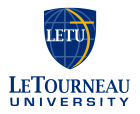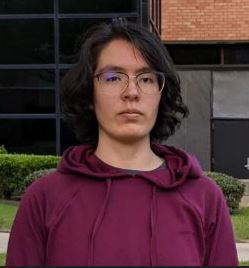Below is a summary of the abstract you submitted. Presenting author(s) is shown in bold.
If any changes need to be made, you can modify the abstract or change the authors.
You can also download a .docx version of this abstract.
If there are any problems, please email Dan at dar78@pitt.edu and he'll take care of them!
This abstract was last modified on April 4, 2023 at 11:49 p.m..

With the incidence of antibiotic resistance increasing around the globe, it is very important to discover and characterize bacteriophages, i.e., phages. Besides being promising alternatives or complements to antibiotics to treat multidrug-resistant (MDR) bacterial infections, phages are also safer options for food industry biocontrol. According to the World Health Organization, ~420,000 people die every year from foodborne illnesses, implying the need for improved food biocontrol. Since phages specifically infect bacteria and do not harm humans or animals, they are an attractive option for eliminating multidrug-resistant pathogenic bacteria and their biofilms from humans, animals, plants, surfaces, foods, and wastewaters while reducing the undesirable effects of using chemical agents. This research was aimed at isolating a novel bacteriophage to contribute to the SEA-PHAGES inventory of phage candidates for treating multidrug-resistant bacteria infections and for industrial pathogen biocontrol and other uses. Mycobacterium phage Mikedrop was isolated on August 23, 2022, from a rich, moist soil sample collected outside of the Glaske building at LeTourneau University in Longview, TX (32.465556 N, 94.727222 W). The enrichment method was used, with Middlebrook 7H9 medium and Mycobacterium smegmatis mc2 155 as the host. The presence of bacteriophages in the filtered (0.22 µm) sample was confirmed using the spot test. Mikedrop was then purified using 10-fold serial dilutions through three rounds of plating. Mikedrop produced clear plaques with an average diameter of 1.7mm (range 1.0-2.5 mm, n = 15) after 48 hours of incubation at 37°C. Web plates were used to amplify the titer of the pure phage. A high titer lysate of 1.77 x 1010 pfu/mL was used for DNA extraction using the Promega Wizard DNA cleanup kit, negative-stain transmission electron microscopy (TEM) imaging, and archiving. The purity and integrity of the extracted genomic DNA was assessed using 1% agarose gel electrophoresis. TEM revealed Mikedrop as having a siphoviridae morphotype with an isometric capsid and a long, flexible, non-contractile tail. ImageJ was used to measure the phage Mikedrop’s capsid diameter (~61.0 nm) and tail length (~203.0 nm). A high titer lysate sample of phage Mikedrop along with 80 µg the genomic DNA were submitted to the University of Pittsburgh Bacteriophage Institute for archiving and genome sequencing. Mikedrop adds to our arsenal of bacteriophages with potential for treating multidrug-resistant bacteria infections, and for food, wastewater, and industrial biocontrol and bioremediation.



